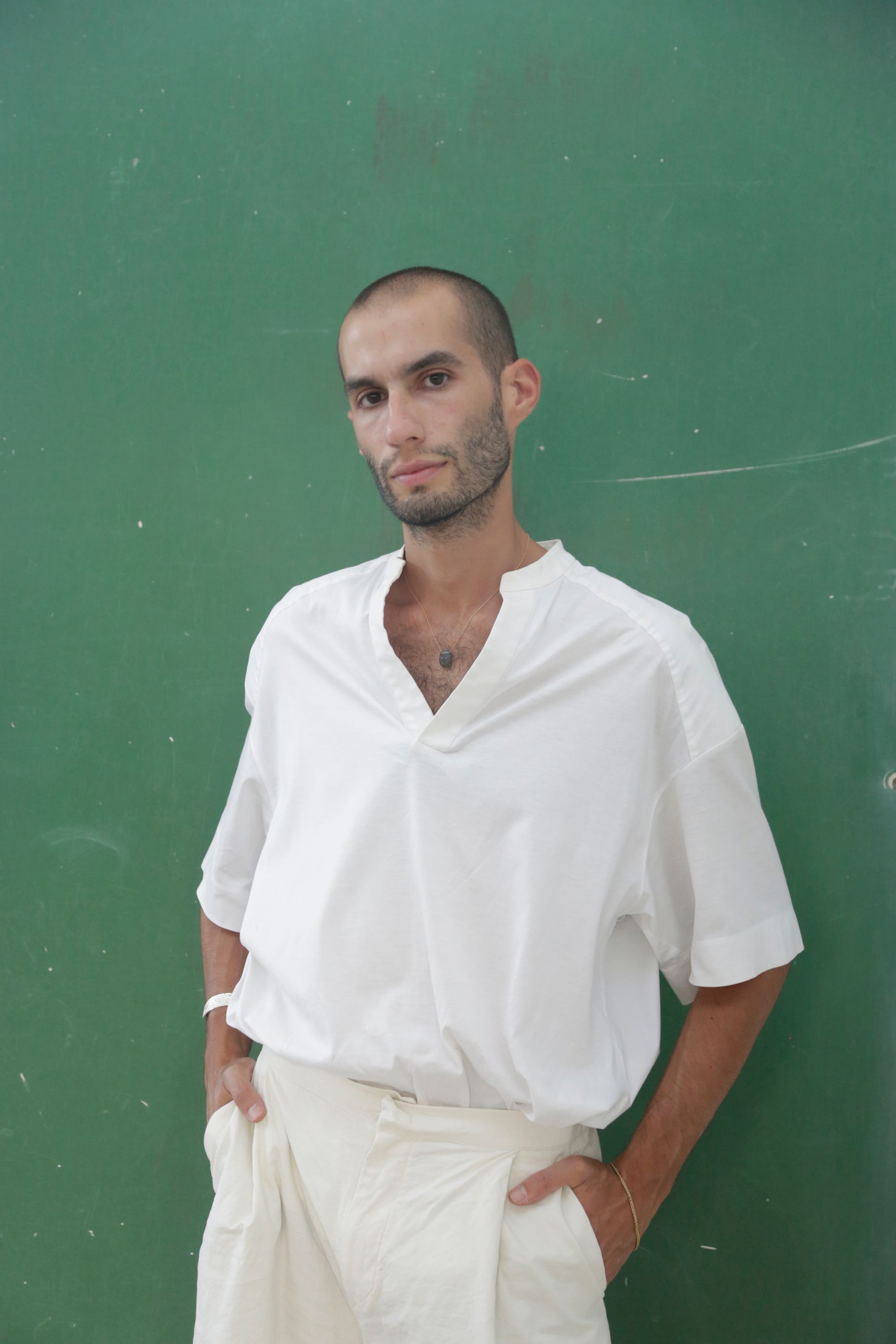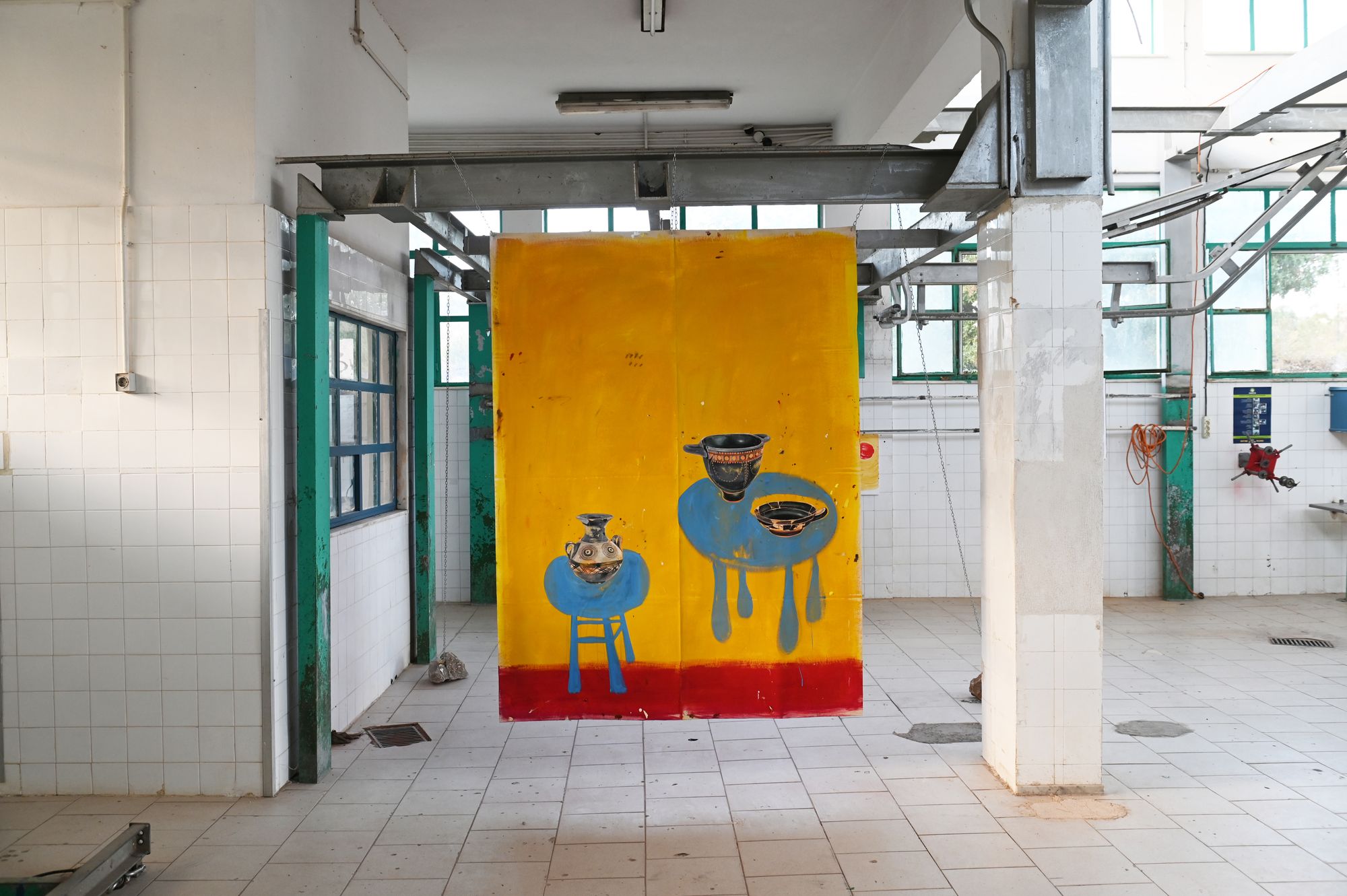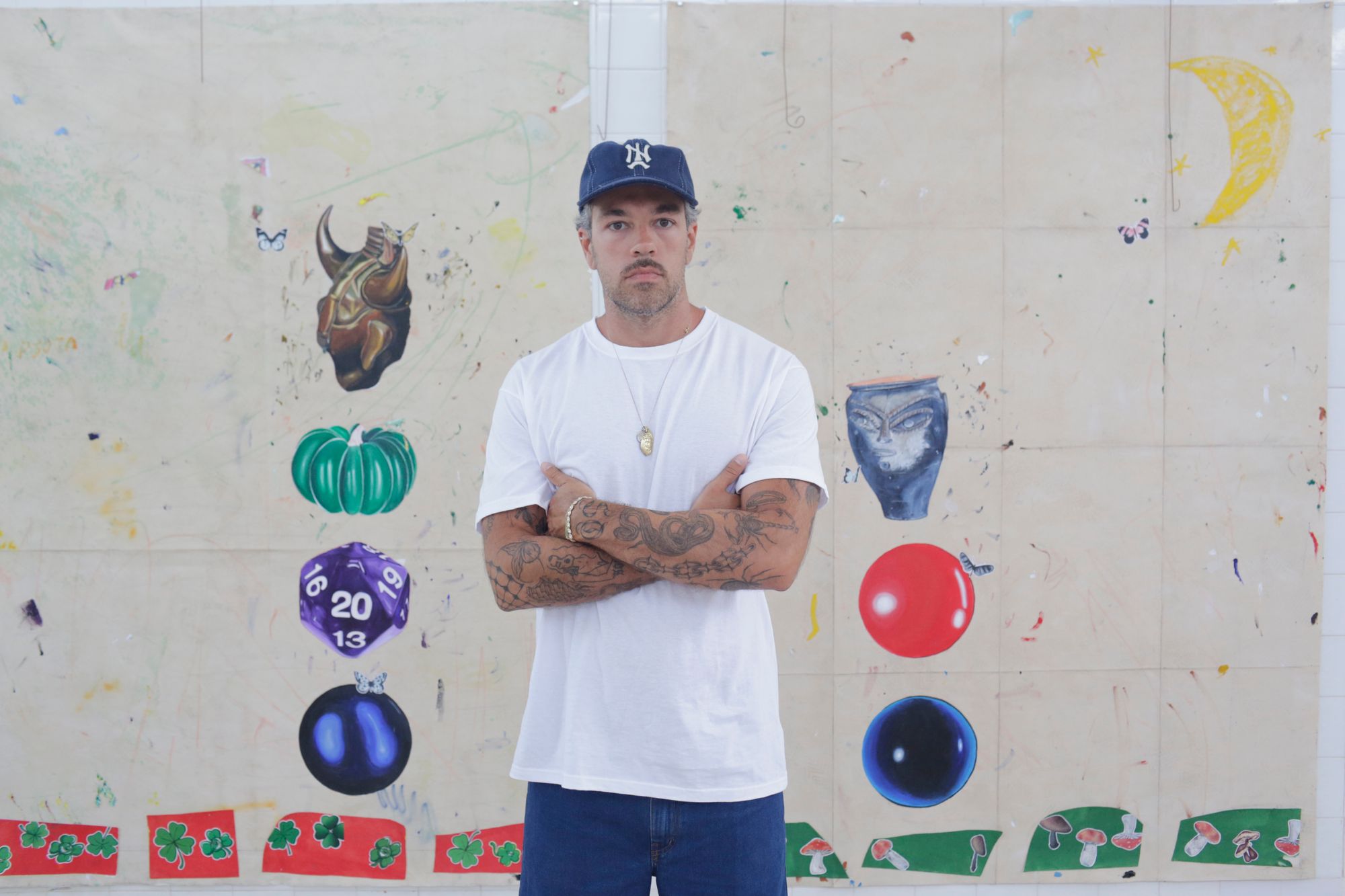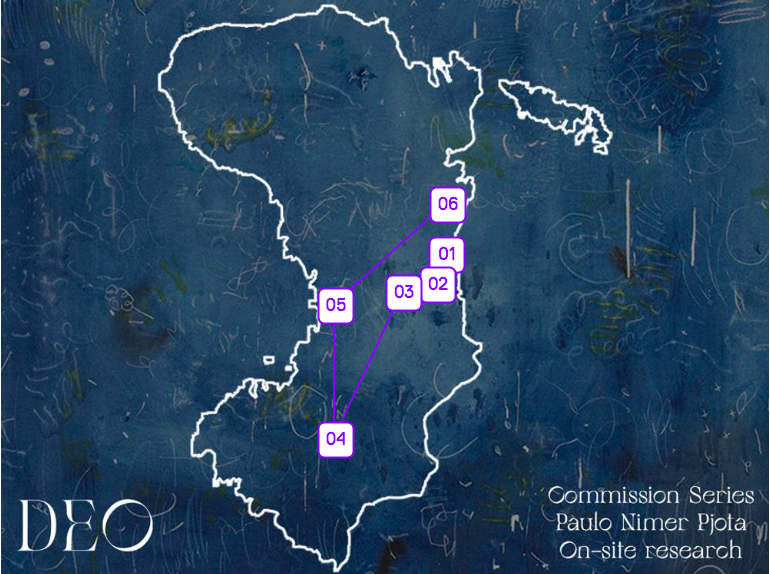Artistic residencies can feel like an anthropologic experience, especially when the artist jumps on a plane from the chaotic city of São Paulo with destination to an ancient and dreamy Greek island, Chios. At the beginning of May 2021, Artist Paulo Nimer Pjota joined there curator Akis Kokkinos who has recently founded the independent contemporary art platform DEO Projects "to support and facilitate collaboration between invited and local artists, cultural practitioners, and communities by sharing skills, knowledge, and perspectives".
From May to July 2021, Pjota explored Chios island to prepare a new exhibition at the Old slaughterhouse of Chios. Over the course of his preparation, the on-site research made of visits to historical and cultural local sites was shared by Kokkinos on Art Curator Grid so the audience could follow the artists footsteps on Chios while he was working on his exhibition "fragmented images, fragmented stories".
See below for the interview we carried out with Akis Kokkinos:


Julia Flamingo - The commissioned series is ultimately a site-specific research and work on Chios Island. How important was it for you as a curator to accompany Paulo Nimer Pjota in his endeavours during the project? Which experiences were the most memorable to you in respect to the dialogue and sharing you both had in this period?
Akis Kokkinos - Commission Series is our inaugural programme as an organisation, inviting an international artist to develop, produce, and exhibit a new body of work inspired by the island. The exhibition marks the first presentation of the invited artist in Greece and results from two-month on-site research in collaboration with local historians, archaeologists, and licensed tour guides. Paulo stayed on the island from May to July 2021. During that period, we had daily interaction, engagement, and dialogue discussing the project, Chios island, the political landscape of Greece and Brazil, and the art ecologies within those contexts. This experience allowed us to deconstruct barriers that we carry in the "professional" world and bring our very true selves to the surface. This is a privilege and a very insightful process for a curator to get through as you learn about the artist's life and their research in-depth. Additionally, as we set up DEO projects during Covid-period, we planned this project over zoom - Paulo, Jessica Cinel (Commission Series x 2021 patron), Luiz Guillerme Rodrigues (international relations at DEO), Costas Kazantzis (Digital presence at DEO), and myself. The fact that we managed to be physically at the show's opening was the most memorable experience that is constantly etched in my mind.

JF - Paulo Nimer’s exhibition deals with “the past, the forgotten, the unspoken”, as it is written in your curatorial text. How do you think the artist manages to bring the past to the present and create bridges with our world and context today? And to what extent did he create connections with his own background as a Brazilian artist?
AK - When Paulo approached me in August 2020, expressing his interest in coming to Chios to research the island’s history, I immediately thought he would create a new body of work that could depart from Chios history and expand to a globally-linked context. When I visited the old slaughterhouse of Chios, a place that holds the memories of the past that is now occupied with the voluntary group of forest protection of the island, Omikron, I started thinking of this transition and performativity of the space. From a place of death to a home for nature and life in general. Ideas around collective healing, transitioning, and metamorphosis opened up.
Having a living cultural organism within that space allowed us to question the asymmetrical relationship between nature and culture. We found a lot of chains in the space that had been left from when the slaughterhouse was operating. We thought that we should use them to hang the paintings from the ceiling and hold them with big rocks to emphasize these conversations. Then, in regards to the paintings, the artist creates polyphonic narratives of today using mythical creatures, utopian landscapes, and archaeological artefacts from the past. Paulo disrupts modernity’s relation to time and juxtaposes past, present, and future through choreographed compositions.
Brazil is always present in the final piece and the process when he works. For example, the paintings' colours are inspired by the artist’s home country and the vernacular and popular architecture of Brazil.

JF - Greece is the crib of Western civilization. It is also halfway between the West and the East. Can you tell us briefly about Chios Island back in the days?
AK - As a curator (and not a historian), I can only give you my own subjective story, which might be relevant or not. I believe that the Western, colonial countries have used Greece to build a very specific narrative of civilisation and produce hierarchies, order, and power in relation to the rest of the world. The construction of the museums was the tool to achieve dominance reflecting the white, straight, western male gaze. As Spivak calls it, this “epistemic violence” is the reason we still suffer from deeply rooted racism and patriarchy. Chios’ geographical location allowed the island to achieve transnational dialogue through trade, shipping, and culture without successfully escaping from those systems. That’s the main reason our programmes aim to create links across cultures. There is an urgency of healing from those patterns that are still present not only to Chios but also in Western countries as a whole.

JF - How do you see the contemporary art scene in Greece today most specifically on the archipelago around Chios island? Is it part of DEO’s aim to disseminate Greek contemporary art?
AK - I've been in this field for almost ten years, and I'm utterly excited to see how the contemporary art scene has been transformed into an active and robust ecosystem. Due to mainly the large-scale private institutions and foundations (NEON, Onassis, DESTE, and SNF), contemporary art in Greece has been embedded in everyday life of the general public and has attracted international interest. These foundations also support smaller organisations, initiatives, and individuals, allowing other cultural voices to be heard through grants, scholarships, residencies and other programmes. We also have some commercial galleries in Athens with an international presence that promote Greek artists as well as many artist-run and independent spaces that shape a very vibrant contemporary art scene. Earlier this summer, Katerina Gregos was appointed the new director of the National Museum of Contemporary Art (EMST), which I think was the happiest news we received in 2021 as cultural professionals in Greece.
Chios island is still an unexplored area for the art crowds as there was no cultural infrastructure focusing specifically on contemporary art. Having said that, many artists, curators, collectors, and other professionals have a strong relationship with the island, whether Greek or international. For us, it was an opportunity to set up DEO projects and bring these people together through our programme. At our opening, on the 10th of July, we had over 200 visitors travelling from South America, USA, North Africa and the Middle East as well as Greece and people from Chios.
Over the next years, we aim to create a yearly-round creative programme that promotes Greek and international artists. To achieve that, we are establishing a patron circle scheme with supporters from Greece and abroad. It's vital for us what happens to Chios to go beyond the geographical limits of the island and reach our audiences across the globe. Chios is part of the North-Aegean islands, and I like to perceive them as an archipelago, as you suggested. Lesvos island has a solid presence of contemporary art with curators such as Nicolas Vamvouklis, creative Director at K-Gold temporary gallery and Victoria Fassianou, curator at Tryfon art residency. In Samos island, the Art Space Pythagorion has significantly contributed to the locals' wellness and quality of life with world-class exhibitions and educational programmes. I strongly believe in open dialogue across those islands and their cultural organisations and potentially developing a network that supports a know-how exchange and a shared creative programme.

Discover here fragmented images, fragmented stories | Commission series x Paulo Nimer Pjota
Curated by Akis Kokkinos
Jul 10th 2021 - Aug 10th 2021 at the old slaughterhouse of Chios